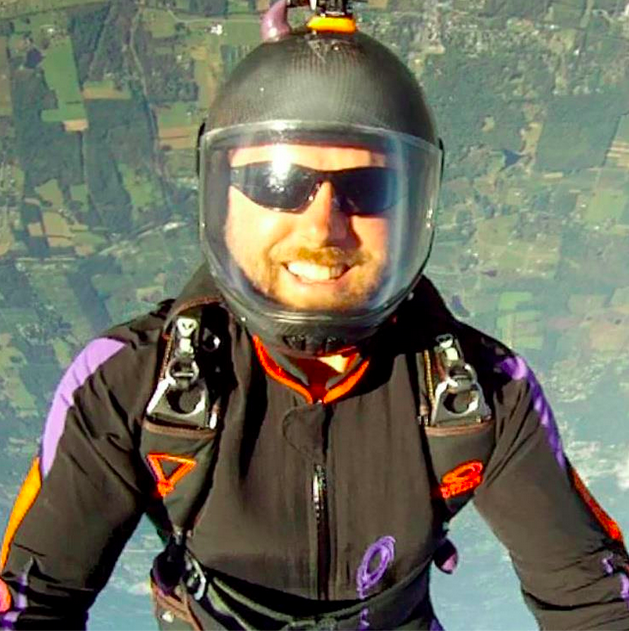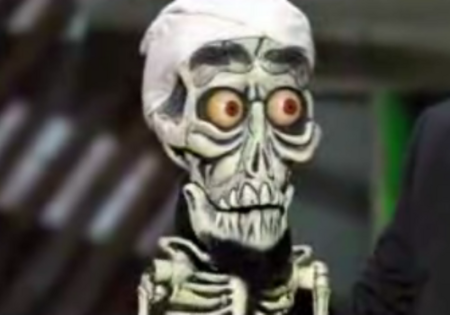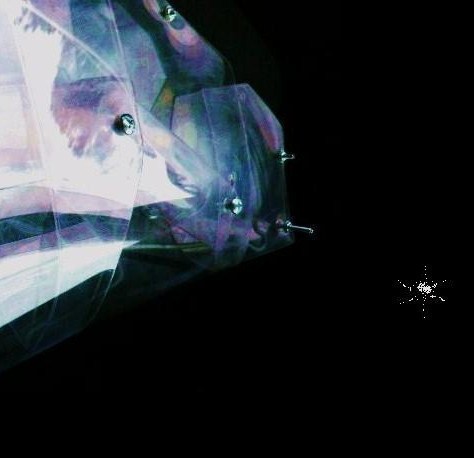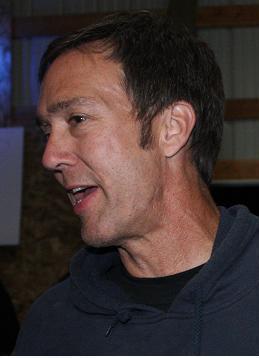Recommended Posts
jerm 0
it can be as simple as a trim setting to having a slight body distortion or an extra fin or somesuch to, once there is airflow over it from forward speed, compensate for the rotational forces.
ask anyone who's eve flown a stunt plane with enough force to hang the plane on the prop (ron?)... you have you actually give the plane the input to counter the spin. Why helicopers aren't just controlled the same way i'm not sure.. i'd guess it's a matter of the wing area needed and/or the velocity of the air across the wing surfaces (mught higher than with a small prop than a bigger rotor)
Landing without injury is not necessarily evidence that you didn't fuck up... it just means you got away with it this time
QuoteProps on airplanes -do- have a tendancy to torque airplanes. Usually the power to weight (mass) ratio isn't enough to do much of anything though.
you should do some reading about P-51s and takeoffs. From what I understand, unintentional rolls during takeoffs (and resultant crashes) were an issue for new pilots.
New P-38 pilots had similar crashes due to engine torque during take off if one engine failed
"You did what?!?!"
MUFF #3722, TDSM #72, Orfun #26, Nachos Rodriguez
rehmwa 2
2 - airplanes have roll control to counter that and also to (duh) control roll
3 - If a dual prop (roll torque offsets) airplane loses one engine the roll torque on some can be significant and of concern - I bet there are pilots and aircraft designers on here that can attest to it
4 - If a chopper designs a controllable airfoil into the tail, it can use the downdraft to counter the rotor torque too.
5 - control surfaces are cool
6 - chocolate and carmel are a good mixture
...
Driving is a one dimensional activity - a monkey can do it - being proud of your driving abilities is like being proud of being able to put on pants
billvon 3,070
> spin up (around the propeller's axis), even though it doesn't have
> an equivalent of the helicopter's tail rotor?
It does. It has a rudder. Rudders don't work when you're standing still (no air to work with) so if you want a helicopter to be able to hover you need a tail rotor. But if you designed a helicopter to take off and land like an airplane, you wouldn't need a tail rotor - just a rudder.
QuoteQuote
Have you ever heard of a NOTAR Helicopter? It has no tail rotor... I guess Newton was wrong]
Correct, a NOTAR design has no tail rotor, but does utilize an "anti-torque" system. You CAN'T change the laws of physics. Some type of anti-torque system must be in place or the helicopter will "rotate" in the direction opposite of the main rotor. In a NOTAR, this is accomplished by ducting air, as a "bleed air consumer" function down the tail boom and out a directionally controlled outlet.
This is safer for EMS, Fire and Public Safety considerations as well as quieter for wuffo considerations. However, NOTAR is relentless thief of horsepower, so there is a tradeoff.
A~
VIRTUS JUNXIT MORS NON SEPARABIT
quade 4
QuoteNew P-38 pilots had similar crashes due to engine torque during take off if one engine failed
One engine failure in a twin is a different animal altogether. They roll, not so much because of engine torque, but due to asymetical thrust. A lot of thrust on one side and quite a bit of drag being created on the other side due to the the engine failure. There's even a "good" side and a "bad" side for which engine fails depending on if both props turn the same or opposite directions.
This actually has some relevance to skydivers in a couple of ways;
1) It's basically how we control our parachutes.
2) We sometimes fly in twin engine aircraft.
One of the worst accidents that ever happened in skydiving was because of an engine out on a twin engine aircraft during takeoff. If pilot's don't react quickly and correctly that scenario is almost certain death. During cruise an engine failure is not quite so bad, but during takeoff it's really, really bad.
The World's Most Boring Skydiver
moretole 0
- Ruben Blades, "Adan Garcia"
Trae 1
The Shneider cup races for floatplanes had a similarly extreme developement curve.
The Italians produced some designs that had two V12's in line in very small aircraft...big wide props.
One of these floatplanes had to be lined up 90 degrees from the take -off line due to the effects of the engine torque turning the aircraft during full-power take-offs.
Designs that originally had less than 1000HP were boosted to well over 2000HP .This included aircraft such as the British Spitfire and the German Me109.
Spitfires and Me109's in particular were susceptible to these effects (engine torque ) you describe.
Twin engine high performance aircraft such as the Lightning , Mosquito and the Hornet had 'handed 'engines in an attempt to cancel out the torque forces. 'Handed' means each engine in the twin installation turned in a differrent direction.
The designers found that some aircraft performed better with downward (in the middle ) turning props as opposed to upwards (in the middle ) turning props.
This is due to the effects of the different swirl patterns of the prop-wash over the wings and stabilisers. Each aircraft was different and no particular 'rule' emerged . Sometimes a simple fin extension would cure a major problem.....sometimes not.
When the USA initially released the Lightning for RAAF use early in WW2 they provided the British with aircraft in an unhanded and unsupercharged version. This gave the P38 a reputation for being a real dog....with the British .
In American usage the P38 was handed and supercharged making it a superlative long-range fighter especially in the pacific region.
Aint aircraft history great
JohnMitchell 16
The NOTAR helo used a ducted fan and bleed air along the thick round tail ( the Coanda Effect) to counter rotor torque.QuoteQuoteIf a helicopter only has the main rotor operating, it will start spinning in the direction opposite to the rotor's. Basically that's explained with Newton's 3rd law
Have you ever heard of a NOTAR Helicopter? It has no tail rotor... I guess Newton was wrong
Max
QuoteRight rudder, Right rudder! Any one who's taken flight lessons has heard that on a daily basis. Just for fun look into p- factor and dont forget spiraling slipstream also.
When flying a helicopter it is left petal at high power setting and right petal when power is reduced. They are called "torque petals" instead of "rudder" petals.
Sparky
P-38s were (are) a bit dangerous because both engines were "critical" and you have to be a stick and rudder master to fly Lightnings with one engine out. Tony La Vier was such a master - his airshow routine was to kill one engine on his P-38 and make a complete aerobatic sequence - which was really a mastery of flight with such a strong P-factor force (that sweet force has killed many people flying or riding in twins - the blue line on your airspeed indicator is a holy grail if one engine says goodbye).


.thumb.jpg.4bb795e2eaf21b8b300039a5e1ec7f92.jpg)




Have you ever heard of a NOTAR Helicopter? It has no tail rotor... I guess Newton was wrong
Max
Share this post
Link to post
Share on other sites